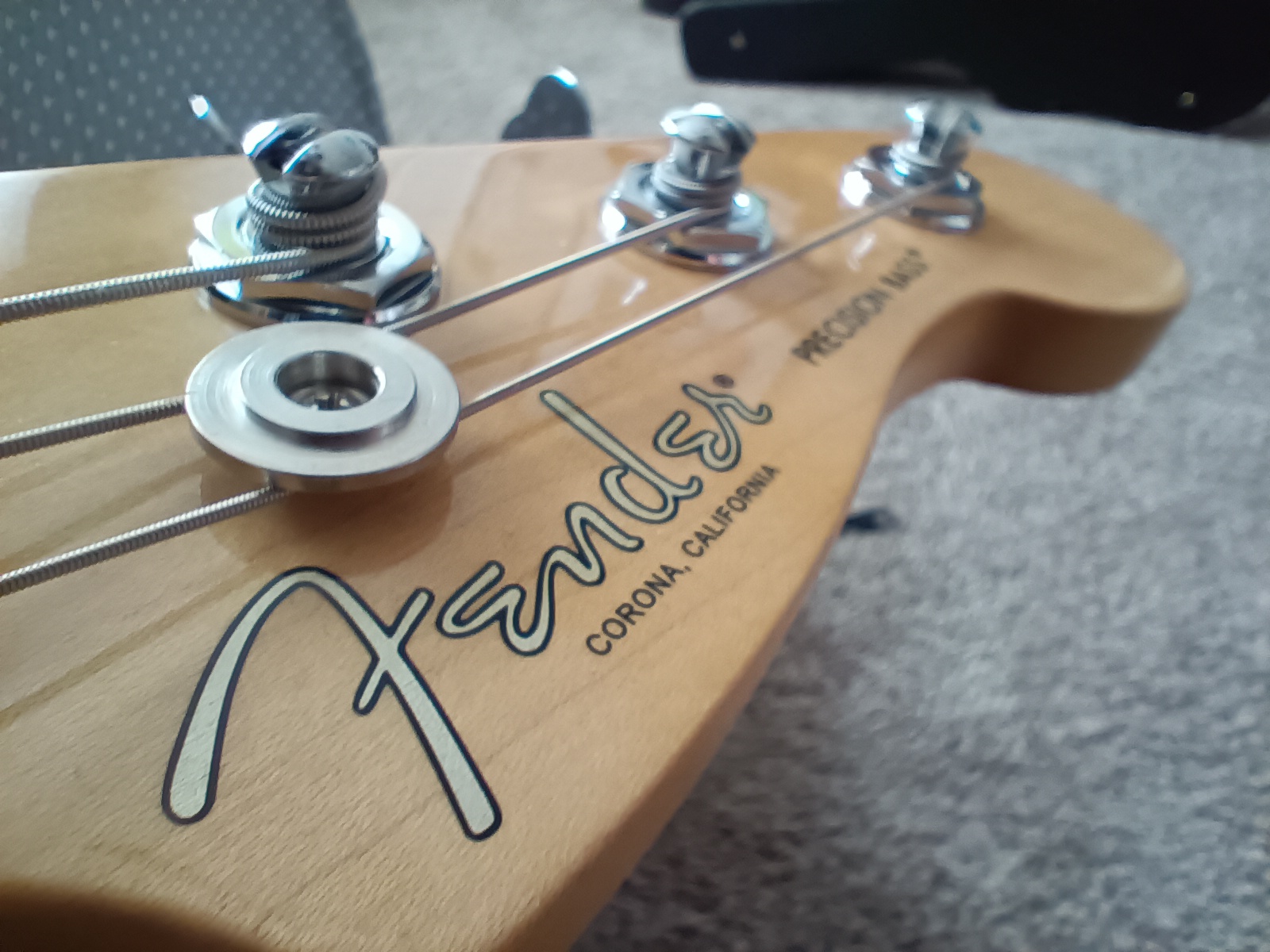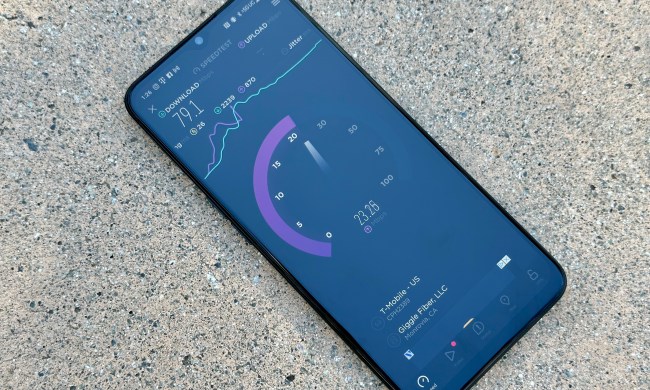“The Moto G Power 5G delivers a decent amount of features and specs for its $300 price. But it also comes with its fair share of compromises.”
- Smooth 120Hz refresh rate
- Decent cameras for the price
- Reliable battery life
- There's a headphone jack!
- Awkward fingerprint scanner
- LCD screen
- Middling performance
- No NFC
Budget smartphones tend to be something of a gamble given how wide a range they can have in quality. As such, picking a good one that’s also within your budget can feel like an impossible task. Luckily, Motorola is here to help with the Moto G Power 5G — a budget smartphone that brings quality in most areas, with only a few exceptions.
Overall, I’ve had a good experience with the Moto G Power 5G, however, the areas where it has to make compromises to be so well-priced are certainly noticeable. They’re forgivable when you remember how much it costs, but that’s not always the thing I wanted to have to keep reminding myself of when using this otherwise solid phone.
Moto G Power 5G: design
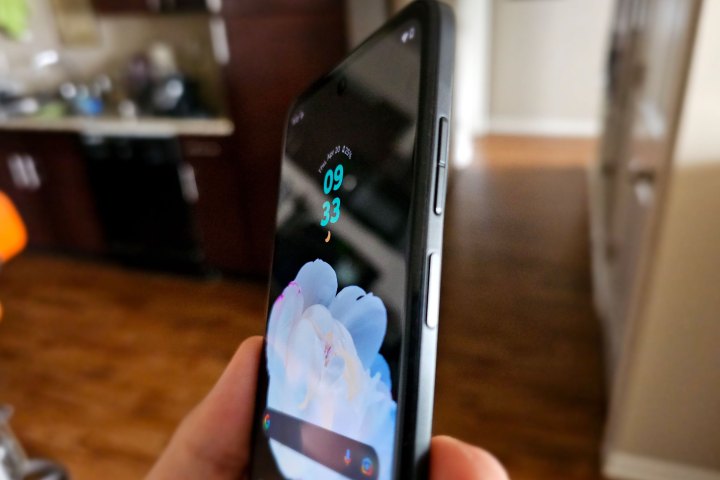
The design for the Moto G Power 5G is pretty standard for most smartphones while being surprisingly light. All in all, its dimensions are 163.06 x 74.8 x 8.45mm and it weighs only 185g. The size and weight are excellent, making the G Power 5G easy to quickly slip into a bag or small pockets.
It features a completely flat 6.5-inch display with a relatively thick bezel at the top and bottom and an in-display front-facing selfie camera. On its rear, the G Power has a raised camera island that features its two cameras, a depth sensor, and a flashlight. In the center of the back of the phone is the Motorola logo printed into the plastic.
The Moto G Power 5G’s size and weight are excellent.
All of the main buttons of the Moto G Power 5G are relegated to the right side. The volume up and down buttons are right next to one another and relatively small, making it sometimes difficult to know without looking if you’re pressing the proper button. Obviously, that’s a small complaint, but it can be a little irritating when trying to adjust the music volume if your phone is in your pocket as you do housework or are otherwise busy. The lock button is directly below the volume buttons, but it has a double function as a lock button and a fingerprint sensor.
In short, the fingerprint sensor is something of a mixed bag. I had some difficulties with it after first setting it up where the sensor wouldn’t read my finger until I went into the settings and rescanned it. After getting that sorted out, the scanner was working about 80% of the time, but it presented a new issue. Any time I pick up the phone, my pointer finger naturally rests on the lock button, which causes it to automatically unlock. While that’s not a bad feature when I want the phone to unlock, it results in frustration when I’m just trying to glance at the time or a notification or if I’m trying to access any of the other lock-screen features. Because of the fact that the scanner also doubles as the lock button, there are situations where locking the phone with my pointer finger doesn’t work since the phone locks when the button is pressed — but then instantly reads my fingerprint and unlocks itself.
While I do appreciate the phone for having a fingerprint scanner in the first place, especially given its price, the lock button scanner felt like more of a hassle than it was worth. It’s not exactly a deal breaker since you can simply turn off the scanning feature, but it left me a little disappointed with the overall usability of the phone in conjunction with the scanner.
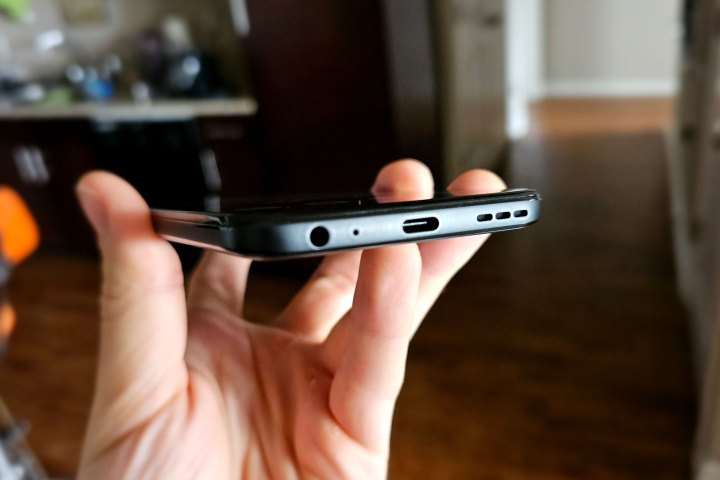
On the rear side, the Moto G Power 5G has a USB-C port that supports 15-watt charging. To the charging port’s right is its stereo speaker setup and to its left is a 3.5mm headphone jack. While I’ve completely shifted my headphone usage to wireless devices (which the phone supports with its Bluetooth 5.3 connection), the fact that the G Power has a headphone jack was welcome in case my wireless headphones were left uncharged and I needed to use a pair of wired earbuds.
There’s only one feature on the left side of the device: a SIM and microSD card slot holder. The two microchips are slotted into the same tray that’s located on the top half of the phone.
The Moto G Power 5G comes in two colors: Mineral Black and Bright White.
Moto G Power 5G: screen
As mentioned above, the Moto G Power 5G features a 6.5-inch Full HD LCD display with a relatively thick bezel at the top and bottom. While OLED screens offer deeper colors and darker blacks that LCD displays simply can’t match, the Moto G Power still brings something to the table in terms of overall smoothness thanks to its 120Hz refresh rate. While the colors aren’t as crisp as those found in similarly priced devices that sport OLED screens, the high refresh rate is able to keep the screen feeling responsive and quick most of the time. As far as resolution goes, the smartphone runs at 2400 x 1080p and sports 405ppi (pixels per inch), giving images a crisp overall look.
While the bezel is noticeably thick toward the bottom end of the phone, I never found it to be much of an issue. Screen and bezel size are just one of those trade-offs that come with using more budget-friendly devices, and I don’t think that the Moto G Power 5G’s bezel was egregious since it never got in the way of function or the overall feel of the screen. Because the bezel is thin on the sides of the phone, it doesn’t feel like it impedes too much on the display.
As far as the screen goes, there’s not much to complain about other than the fact that it’s not OLED. A 6.5-inch display with a refresh rate of 120Hz on a phone as modestly priced as this makes it something of a steal — as long as you’re willing to put up with the washed-out blacks of an LCD screen.
Moto G Power 5G: software and performance
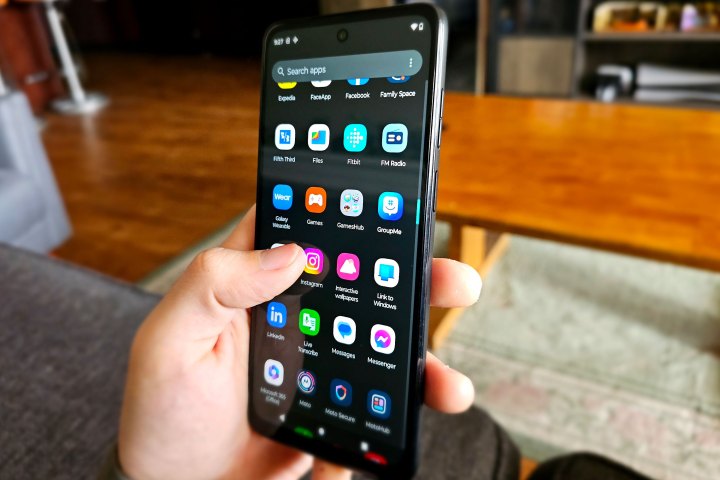
The Moto G Power 5G runs Android 13 using a MediaTek Dimensity 930 processor. When it comes to performance, this is certainly a case of getting what you pay for. The best thing I can say about the G Power’s performance is that it’s serviceable. There are certainly times when things slow down, such as when you have several apps running in the background or are playing processor-intensive games. But, generally, the performance is fine and acceptable.
As long as you aren’t expecting the Moto G Power 5G to be a workhorse phone that runs graphically intense games well and can multitask between complicated apps, you should have a decent time with it. If you are looking for something with more power behind it, you may want to look elsewhere. I didn’t experience any outright app crashes, however, there were several times when apps stopped in their tracks and required me to close and restart them in order to start working again. While that’s obviously less than ideal, issues like that are bound to happen with phones running on less powerful processors like the Dimensity 930, so it was to be expected.
For the essentials, the Moto G Power 5G got the job done.
For the essentials — such as texting, maps, and most social media apps — the Moto G Power 5G got the job done. Something that definitely helps with the overall smoothness of the experience of using the phone is the 120Hz refresh rate mentioned above, which gives the phone a general sense of stability.
Android 13 is as reliable as it ever is; Motorola doesn’t offer anything special with it, save for a handful of Moto-specific apps that come preinstalled on the phone and that I mostly ignored. As such, the actual experience of using the G Power is comparable to that of using a Pixel 7, minus the much more reliable Tensor G2 processor.
My version of the Moto G Power 5G offers 256GB of built-in storage that can be expanded with a 1TB microSD card that’s slotted into the SIM card tray. For memory, the phone offers 6GB of RAM. While those numbers aren’t exactly the most cutting-edge when it comes to performance (since some other similarly priced phones offer up to 8GB RAM), it should be enough to get the job done.
Lastly, it’s worth pointing out that the Moto G Power 5G does not have NFC — meaning you can’t use it for contactless Google Pay payments. It’s a feature Motorola has omitted for years, but it’s a compromise that’s increasingly difficult to overlook on a $300 smartphone in 2023.
Moto G Power 5G: cameras
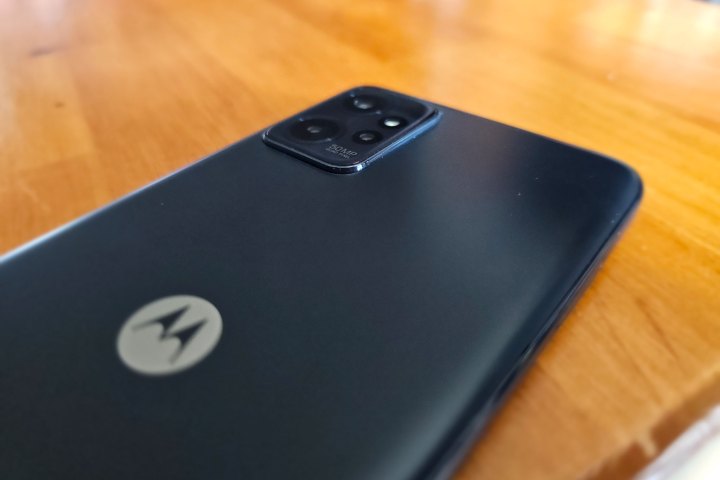
There are three cameras total on the Moto G Power 5G: a 50MP main camera and 2MP macro camera on the phone’s rear, plus a 16MP front-facing selfie camera built into the display. As far as cameras go on a $300 smartphone, I was pretty surprised with how well they perform. There are some obvious limitations to them, such as their struggle to capture precise details on objects at a medium distance, but all in all, the three lenses do enough to be considered solid by anyone picking up the G Power.
Like most smartphone cameras, the three lenses on the Moto G Power 5G work best when in optimal, natural light. If you’re taking photos outside during the day or in other well-lit environments, then the phone will be able to capture memories with ease and accuracy. If you’re relying on it to take quality photos of distant objects, however, regardless of how well-lit they are, you’ll likely be disappointed, as the zoom will result in grainy photos. That’s because there’s no telephoto zoom — just digital zoom.
The selfie camera takes excellent front-facing photos, but I would stay away from the built-in portrait mode that the phone offers, as it tends to bump up the contrast on the subject, creating some harsh lines that result in a subpar photo. I didn’t find much need for the portrait mode, however, given how solid the selfie camera is without it.
The macro lens offers some solid hyper-detailed photos, but I never found myself using it all that much. The use case for taking photos of extremely small items seems, in my opinion, to be pretty slim, and I would have preferred a telephoto lens for better long-distance photography.
If you have the choice between the Moto G Power 5G and another modern smartphone for taking a picture, the G Power won’t be able to hold much of a candle to something like the Galaxy S23 or iPhone 14, but it still takes great pictures if other cameras aren’t available — and if those other phones aren’t within your budget.
Moto G Power 5G: battery and charging
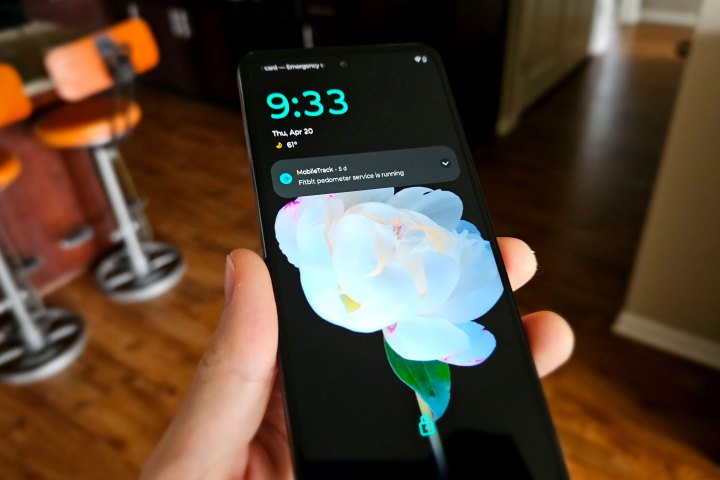
The Moto G Power 5G sports a 5,000mAh battery, which keeps it going throughout the day without needing to stop at a charger. I’d say that I fall right in the middle when it comes to heavy and light phone users and I never had any issues with running out of battery midday when using the G Power. But I wouldn’t go on a weekend trip with the G Power without a charger as its battery life usually started to hit the 20% mark as I was beginning to wind down for bed.
I never had any issues with the Moto G Power 5G’s battery.
The phone supports 15W USB-C charging, which, while not the fastest on the market, still allows it to get juiced up from 0 to 100% in about 90 minutes as long as you’re using the proper charging brick and outlet. If you’re using the phone for more battery-intensive activities like playing games, watching streaming content, or using Google Maps, your mileage with the battery life will likely be much less than anyone casually using the phone for texting and social media breaks throughout the day. That said, the Moto G Power 5G is still pretty reliable when it comes to holding a charge.
Unfortunately, the phone doesn’t support wireless charging. which is slightly inconvenient for me as I a wireless charging pad on their nightstand. But since most charging pads connect to USB-C ports, there wasn’t much of an adjustment to make. A 10W charger is included in the box with the phone itself, but if you’re looking for the fastest, most optimal charge, then I’d recommend investing in a 15W charging brick since the phone supports it.
Moto G Power 5G: price and availability
There are two variants of the Moto G Power 5G: one with 4GB of RAM and 128GB of internal storage and another with 6GB RAM and 256GB of internal storage. The only one I’ve been able to find listings for is the 6GB RAM/256GB storage version. It can be bought directly from Motorola for $300 or through most other electronics retailers like Amazon and Best Buy for the same price.
According to Motorola, the 4GB RAM/128GB storage version is not sold by Motorola, but by its carrier partners, which also the price for it. In my preliminary research, I wasn’t able to find any carriers offering the G Power with 4GB RAM or 128GB storage, so if you’re looking to pick one up, you may need to go with the larger storage capacity variant. At the end of the day, it’ll likely only save you around $50, which might not be a great trade-off for a slower experience.
Moto G Power 5G: verdict
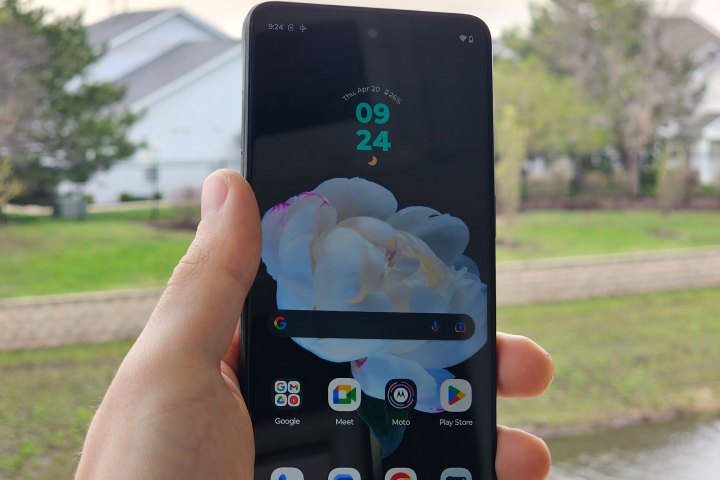
There’s a lot to like about the Moto G Power 5G, but it’s also a letdown in a lot of crucial places. With the lock button/fingerprint scanner, I ran into numerous usability issues where simple things that would have only taken a second (such as checking the time) ended up being 15-second diversions. The cameras are great, especially for the price, but opening the camera app can cause a stutter that takes a few seconds to sort out as the Dimensity 930 processor tries to find its footing. And again, a phone without NFC in 2023 is just ridiculous.
If you’re OK with having a phone that teaches you how to be patient, then the Moto G Power 5G is a solid pick. But it’s also worth remembering that there are plenty of other options. The Galaxy A14 5G offers a fairly similar experience for just $200. If you have a little extra cash to spend, the $450 Galaxy A54 is another incredible purchase. And with the Pixel 7a expected to launch soon, likely for $499, that’s another option you’ll want to consider.
I certainly think that the Moto G Power 5G is worth picking up for some people given its cameras and price. However, anyone wanting to buy it needs to ask themselves if they can deal with its compromises. If you can, great! But if not, there are plenty of other handsets to consider.







